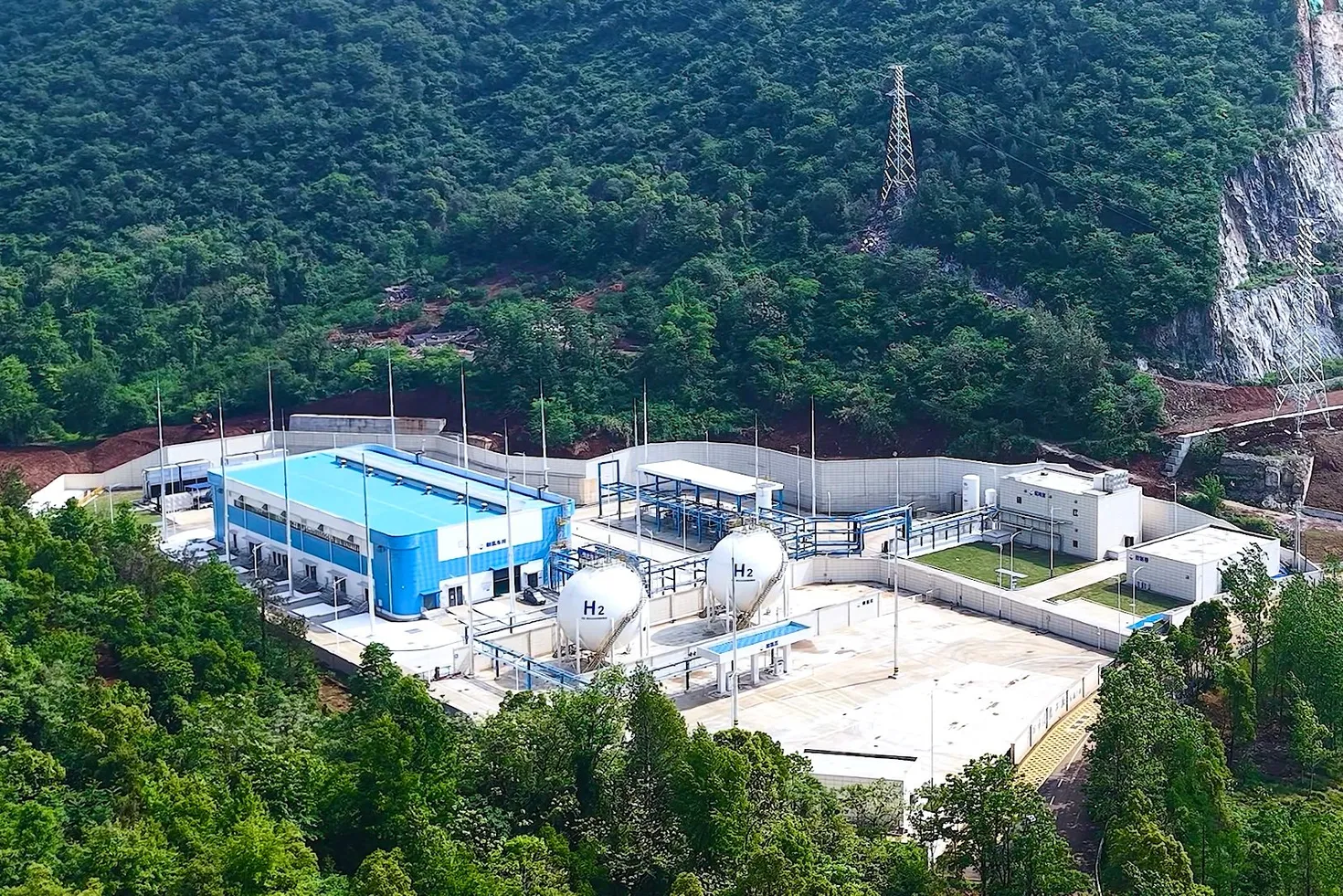China’s first green hydrogen project using PEM and alkaline electrolysers in joint operation begins production
Daye Green Power’s $476m facility in Hubei province, which utilises Sungrow electrolysers, is also the first in China to use underground cavern storage

The first green hydrogen project in China to use both PEM and alkaline electrolysers in joint operation has begun production in Hubei province.
The 27MW facility in the city of Daye — operated by local developer Daye Green Power — uses five 5MW alkaline electrolysers and one 2MW PEM machine supplied by Sungrow Hydrogen.
It is also the first in China to store hydrogen in an underground cavern.
Sungrow says that the project combines the “cost efficiency and operational stability” of alkaline electrolyers “with PEM’s dynamic response and flexible power adaptation, boosting efficiency and cutting energy consumption”.
“The combined operation of ALK and PEM is primarily aimed at enhancing the overall dynamic performance of the system [and] broadening the load regulation range,” a Sungrow spokesperson tells Hydrogen Insight.
“Additionally, this approach serves as a technical validation. Sungrow Hydrogen remains committed to advancing the development of the hydrogen energy industry through innovative exploration.”
The 3.44bn-yuan ($476.2m) facility — sited on an abandoned mine and including 300MW of co-located solar panels — also utilizes an AI-powered smart management system that “optimizes renewable power matching and real-time safety control”, according to Sungrow.
Hydrogen produced at the facility will be stored in two above-ground spherical storage tanks, with the “surplus” H2 being channelled into a cylinder-shaped underground storage cavern with a length of 30 metres and a diameter of five metres.
“The innovative underground hydrogen storage solution sets a new benchmark for future green hydrogen developments worldwide,” said Sungrow.
The estimated annual green hydrogen production of 1,800 tonnes will be used to fuel both hydrogen buses and H2-powered industrial vehicles in the local mining industry, including as dump trucks and excavators.
Daye city is known for its coal, iron and copper mines, and its centuries-old smelting industry — ie, the extraction of metals from ore. In fact, the city’s name translates as “great smelter”.
According to research house BloombergNEF, Sungrow was the fourth-largest supplier of electrolysers in the world last year.






